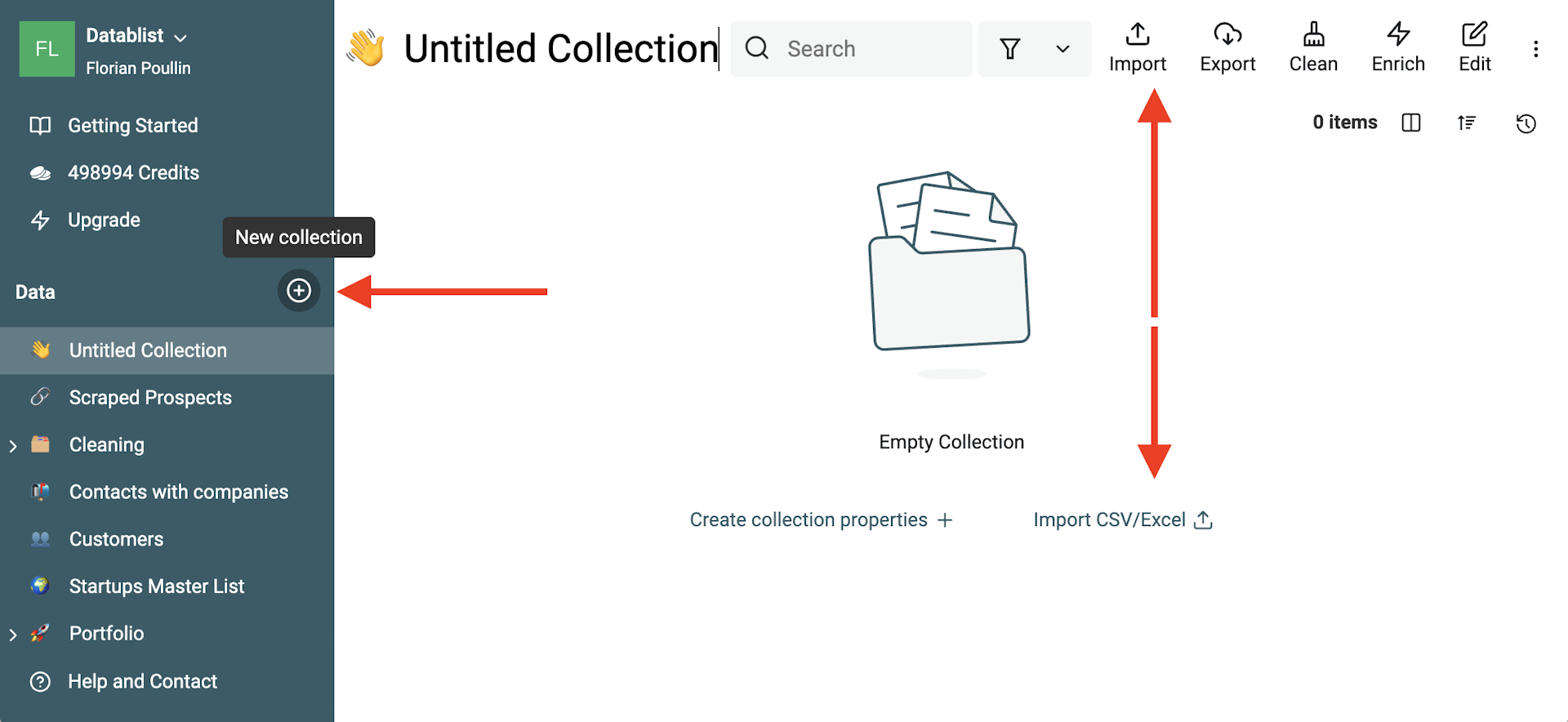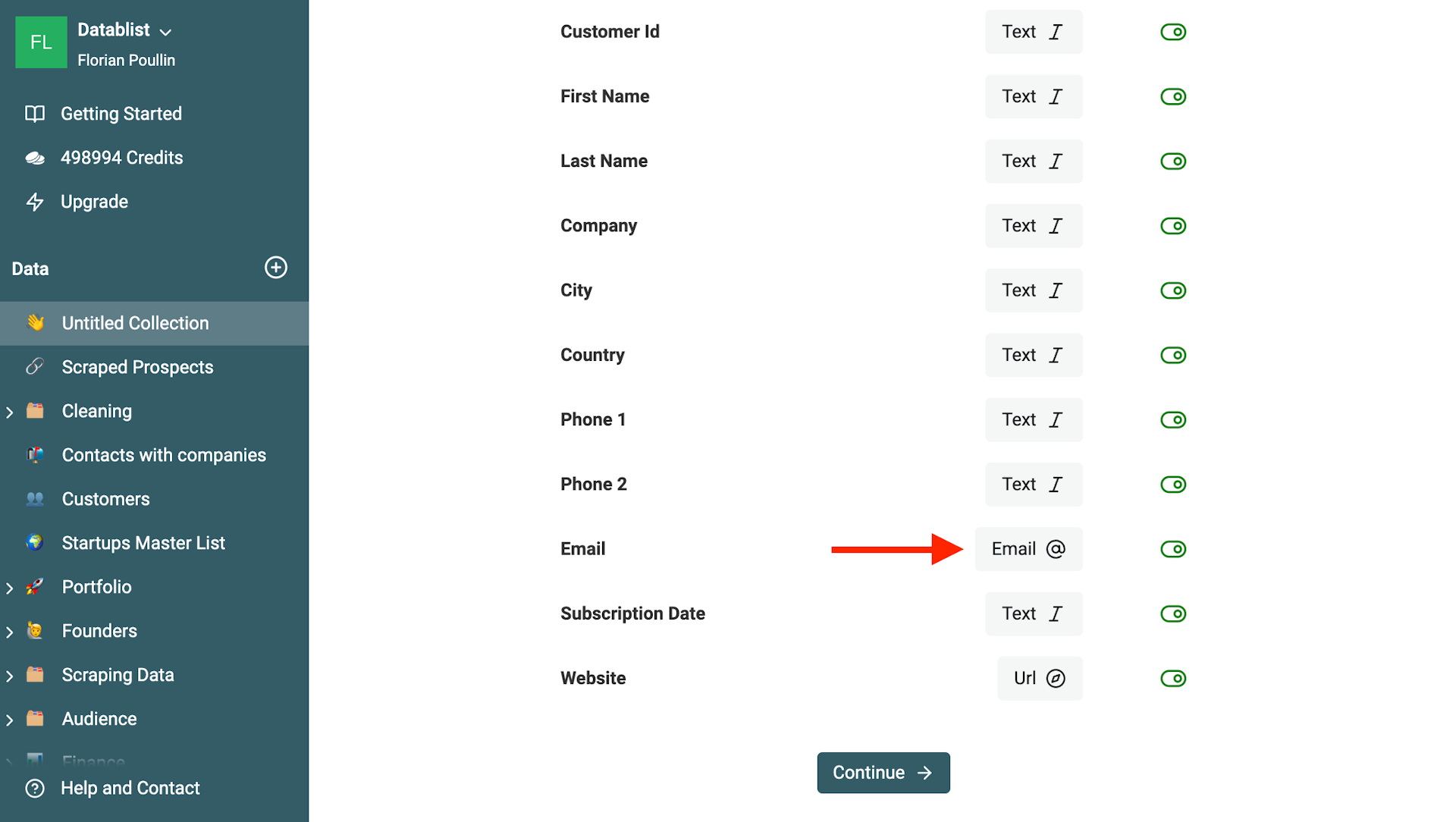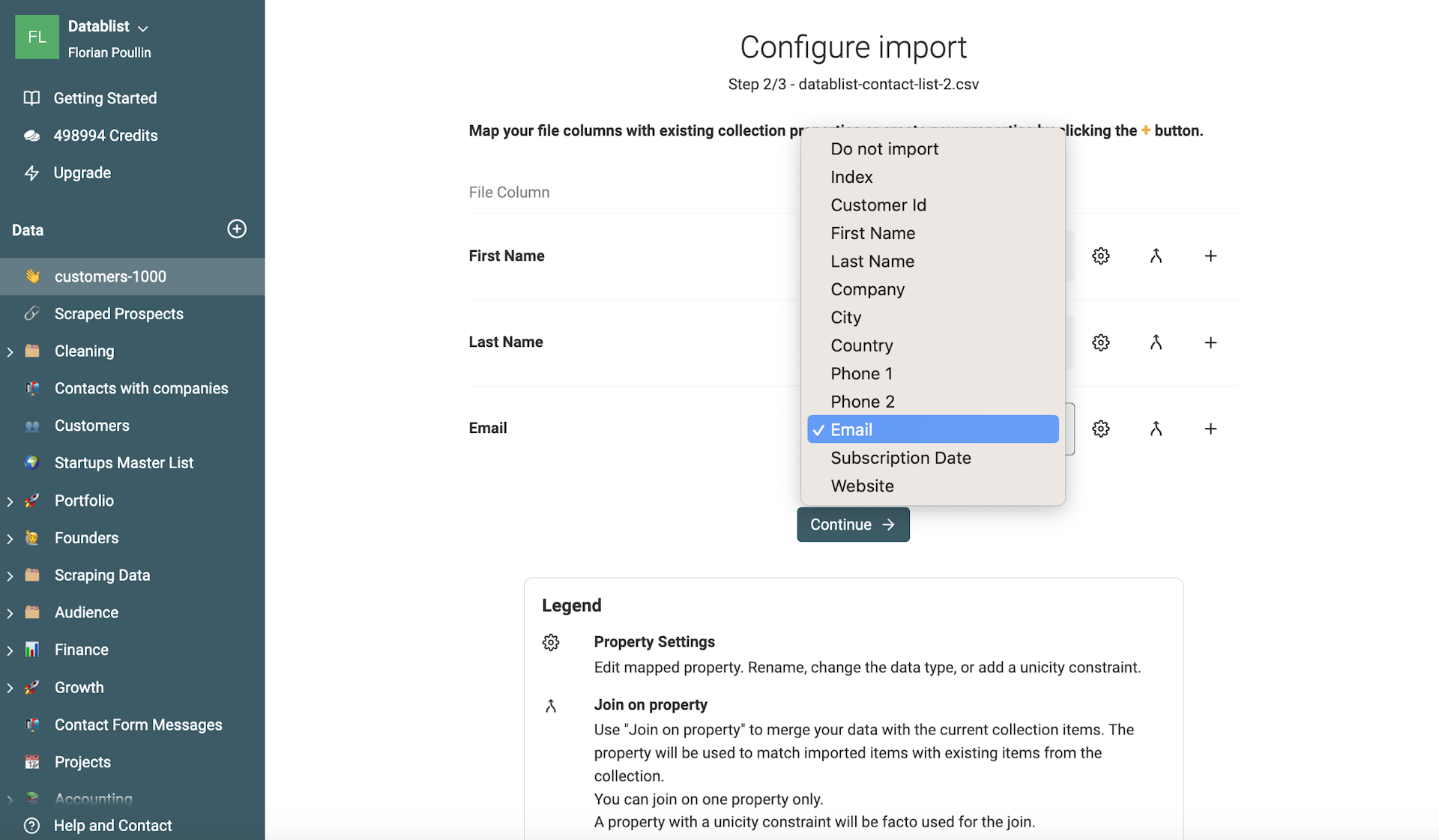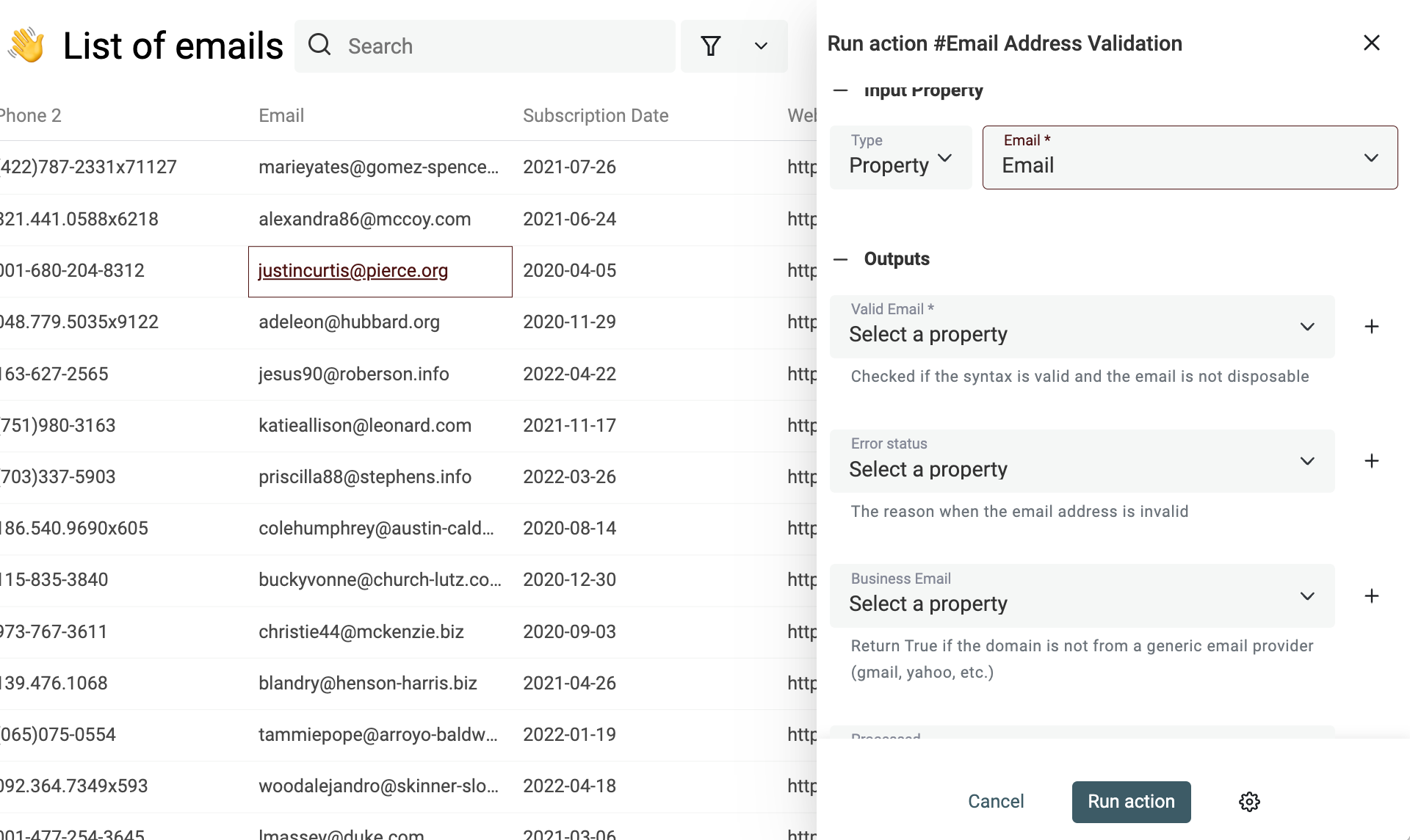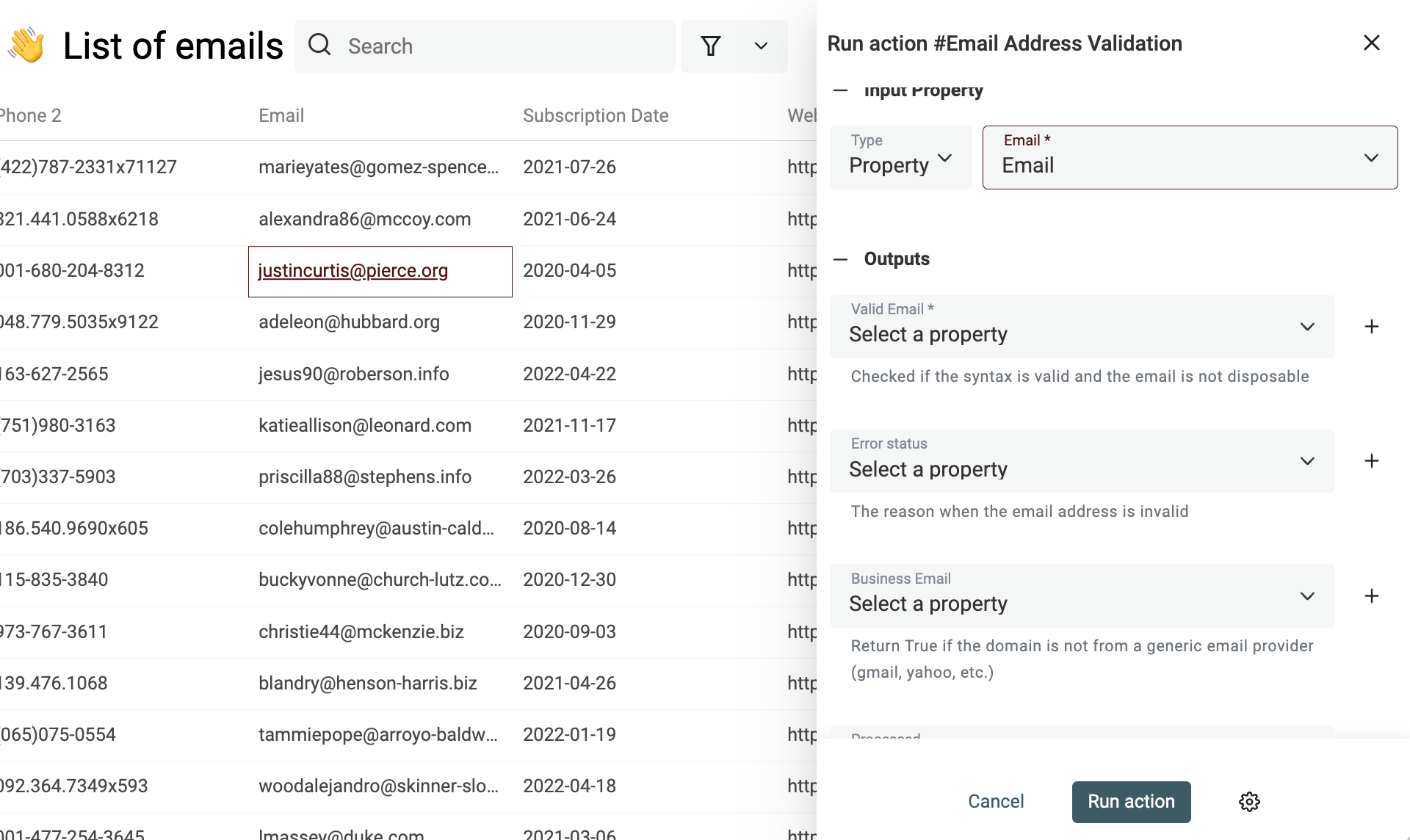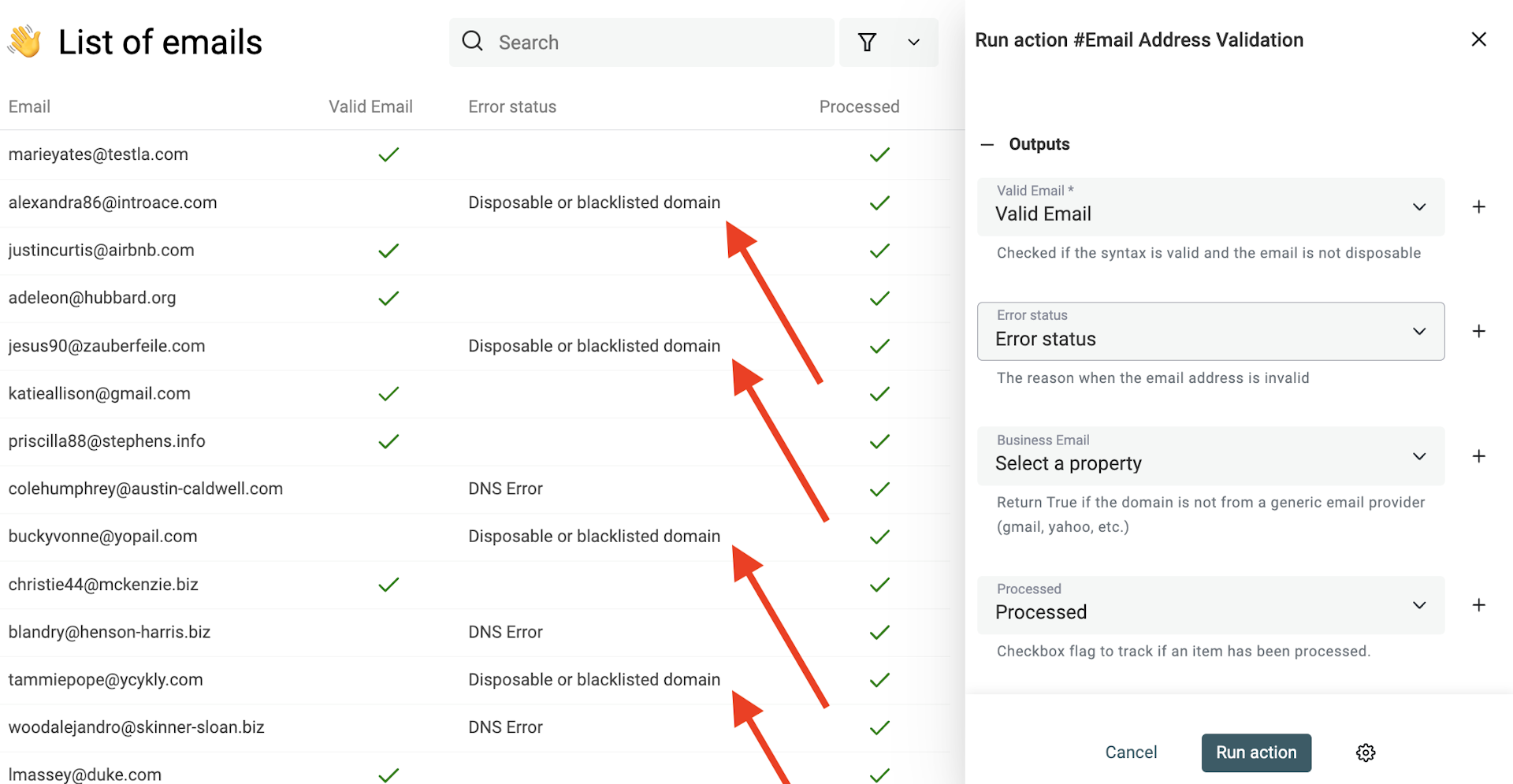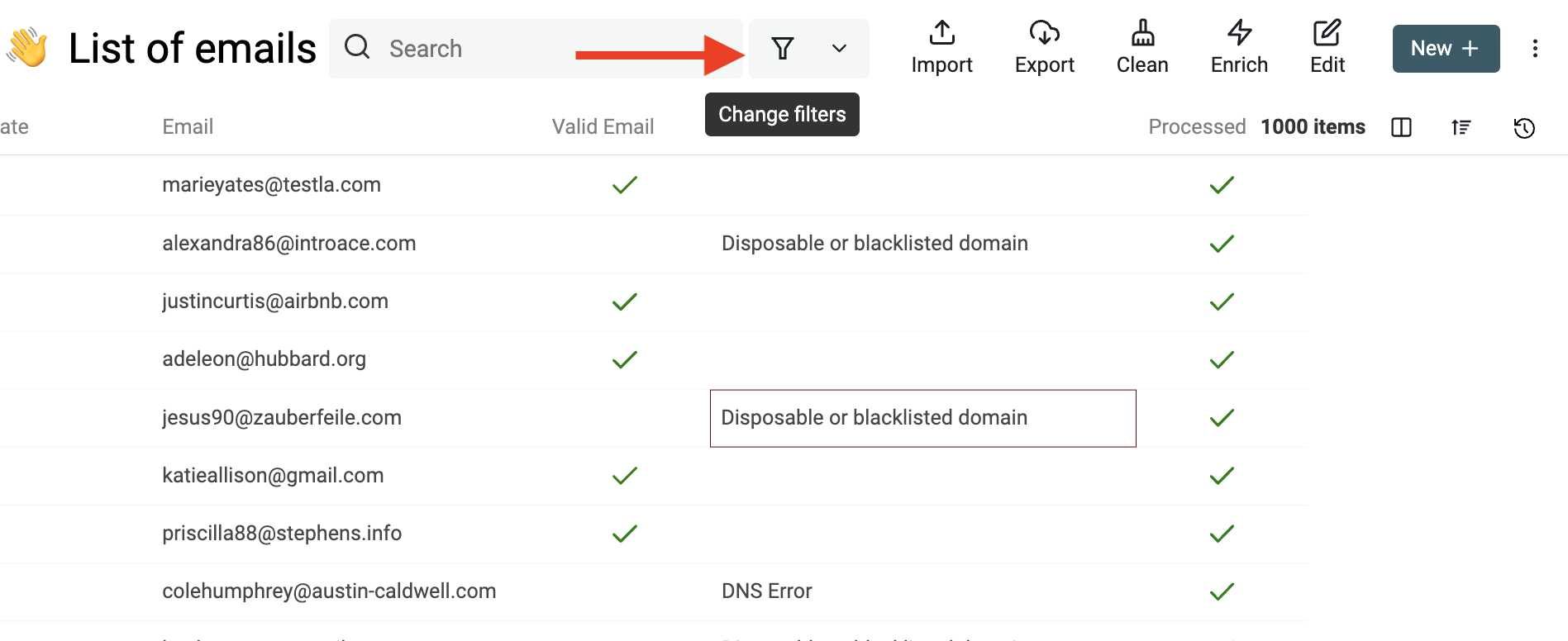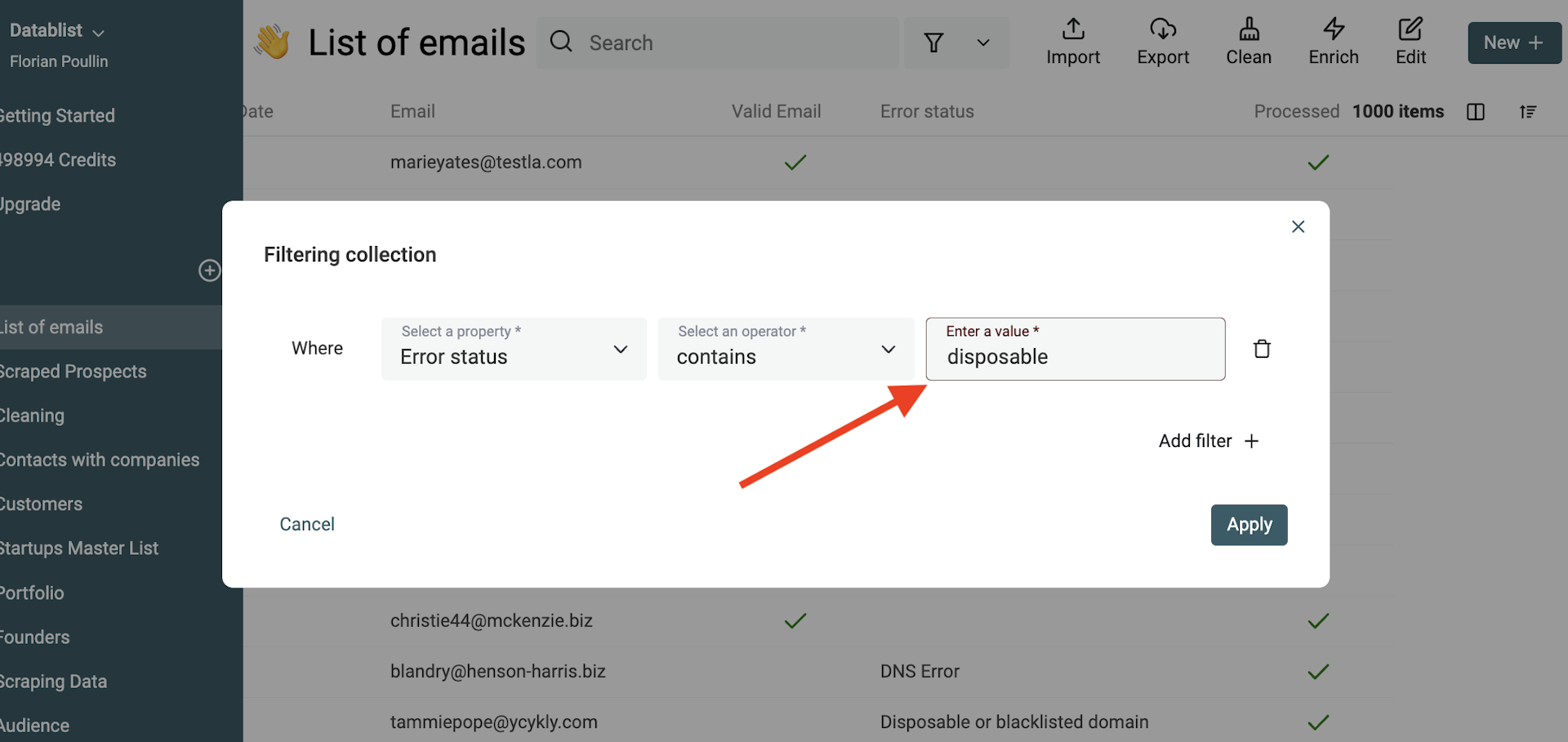Disposable email addresses, or temporary email addresses, can be easily created and discarded. For your applications with online registrations or subscriptions, it becomes challenging to establish a reliable and consistent line of contact with your users. This can lead to missed opportunities, miscommunications, and delays in important information sharing.
They create challenges for businesses. For freemium businesses, it impacts the marketing strategy and the cost of marketing campaigns with emails sent to dead-end addresses. And this impact the overall quality of your domain with a bad sent/delivered ratio.
Datablist provides a free tool to detect disposable domains in a list of email addresses. Datablist maintains a database with more than 50k disposable email domains. Click here to get the domains database as TXT file.
In this guide, you will learn:
- How to flag temporary email addresses from a CSV list
- Export the segmented clean email and/or junk email addresses
Step 1: Import your list of email addresses
Datablist can be used without registration to view and edit CSV files. However, the email verification service that we'll use later requires an account.
👉 Create your account for free 👈.
The first step before cleaning your email address lists is to create a collection on Datablist. The collection will store your email addresses.
In Datablist, click the + to create a new collection. Give it a name (and an icon 😍).
Now you have a collection, it's time to import your list of email addresses. Import a single file or merge multiple sources into a single collection.
Notes: Another method to import your email list is using copy/pasting from a spreadsheet. Click here to know more.
Datablist opens CSV files and Excel files. Your first rows will be read to detect the encoding used. If you see weird characters on the detected headers or later when importing, create another collection and try to import your CSV using another encoding.
The CSV import tool reads the columns and shows you a list of the detected CSV columns. If your email addresses are valid, the data type will be Email. It will add some validation to your data edition later on Datablist.
Notes: If your Email column is detected as Text, it means you have some syntax error with your data. Import it with the Text data type and use Datablist to clean your data.
Import other contact lists if needed
If you are building an email collection from several sources, just import all your lists into the same collection.
When importing other files, a mapping step will be shown. In this step, you will map your collection properties with your CSV columns. With this mapping, your new data will be added to the existing properties.
Step 2: Detect disposable email domains
After importing your email addresses into Datablist, you are ready to run the "Email Verification Service"!
Notes
You must be registered to use the email verification service. Sign up (it's free). If you already have an anonymous collection, import it into your workspace.
What does the service check?
Datablist has a built-in free email verification service. This free service does 4 verifications:
- Email syntax analysis
- Domain MX records check
- Disposable providers check
- Is the email address a Business Email or from a generic provider (Gmail, Yahoo, etc.)
👉 Click here for the complete guide on how to clean an email list for free.
How does the Disposable Email Provider detection work
The only way to detect temporary email addresses is to compare the domain with a database of disposable email providers. Datablist maintains a list with more than 50k domains used by temporary email services.
For each email address, Datablist split it into 2 components: the username and the domain. Then it searches for the domain in the list of 50k temporary email domains.
When it matches, it returns a "Disposable or blacklisted domain" error.
Detect disposable email domains
Performing the check is simple. Just click on the "Enrich" menu.
Then select the "Email Address Validation" enrichment.
Once you have selected "Email Address Validation", a drawer opens on the right with 3 sections: Settings, Input Properties, and Output. First, in the Input Properties, select the property which contains the email addresses in your collection.
On the "Outputs" section, click on the "+" button next to the output results you want. At least, create a property for the "Error Statut" output.
After the configuration, your screen should look like that.
Click on "Run action" to process your data. The enrichment will process your current items:
- Only the selected items if you have selected items
- Only the filtered items if you have filters
- All your items otherwise
After the run, the Error status property contains the message 'Disposable or blacklisted domain' for temporary email addresses.
Step 3: Export the temporary email addresses
The last step is to segment your email list into two distinct lists:
- The valid email addresses
- The junk email addresses
To do so, you can use the Datablist feature to filter CSV files.
First, click on "Change filters" in the header bar.
The best way to discriminate the temporary email address is to filter on the "Error status" property and to search for the text disposable.
Then, click on the "Export" action and select "Export filtered items". It will open a modal to export your items into a CSV file or a Microsoft Excel file.
You can proceed with the filter on the Valid Email property to export only valid email addresses.
FAQ
What is a disposable email address?
A disposable email address, also known as a throwaway email, fake email, or temporary email address, is a temporary email account that can be created and discarded quickly without any significant personal information or registration process. These email addresses are typically used for short-term purposes such as online registrations, downloading files, or accessing certain services that require an email address.
Disposable email addresses serve as a privacy and security measure, allowing users to protect their primary email accounts from spam, unwanted marketing emails, or potential security threats. They provide a way to receive emails without revealing one's actual identity or personal information.
Users can create a disposable email address through various online platforms or services that offer such functionality. These addresses typically have a limited lifespan, ranging from a few minutes to several days, depending on the service provider. Once the designated time period expires or the user no longer needs the address, it can be discarded, and any emails sent to that address will no longer be accessible.
While disposable email addresses can be useful in certain contexts, their widespread use has also raised concerns related to spamming, fraudulent activities, communication obstacles, and security vulnerabilities.
Why should you remove junk email addresses from your list?
Cleaning your email list from junk email is advisable for several reasons:
- Cost Saving - Sending emails to invalid addresses wastes resources, including time, effort, and money.
- Marketing Efficiency - You can use the export to create a new clean marketing campaign list. Repeatedly sending emails to invalid addresses can negatively impact your email reputation. High bounce rates and failed deliveries can signal poor email management practices to email service providers (ESPs) and may result in your emails being marked as spam or filtered out. Exporting invalid emails helps maintain a positive sender reputation and improves deliverability rates.
- For analytics purposes: Exporting invalid email addresses allows you to gather accurate analytics and metrics about your email list. What is your percentage of junk email addresses? If this ratio is too high, it's time to add some verification directly to your user registration workflow.
Cleaning your contact list from disposable email addresses must be part of your email list data hygiene, along with other data cleaning tasks.
What is disposable email domains database used?
Datablist Free Email Validation service uses several disposable domain lists. But the main ones are available freely:
- Domains list maintained on Github: https://github.com/disposable/disposable-email-domains/blob/master/domains_mx.txt
- Domains list maintained by stopforumspam: https://www.stopforumspam.com/downloads
Import with Copy/Pasting
Datablist is compatible with copy/paste from any spreadsheet. Just select the cells from your spreadsheet, go to your Datablist collection, and use the Edit -> Paste from your browser or directly the Ctrl + v keyboard shortcut.
On pasting, Datablist will show you the columns and rows it has detected. To import a column, map it to an existing property or create a new property.
Warning: Only mapped columns will be imported!
What temporary domain provider does the service detect?
This Email Verification tool detects temp mailboxes such as temp-mail.io, yopmail.com, 10minutemail.com, etc.
It doesn't flag email proxies such as Protonmail. Email proxies hide the final email addresses but still route incoming emails to the user's inbox.


